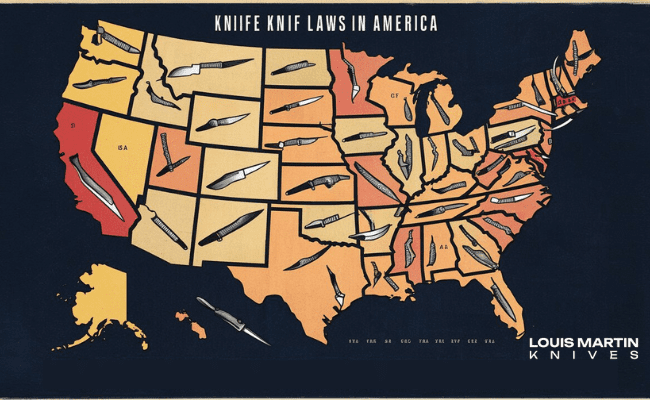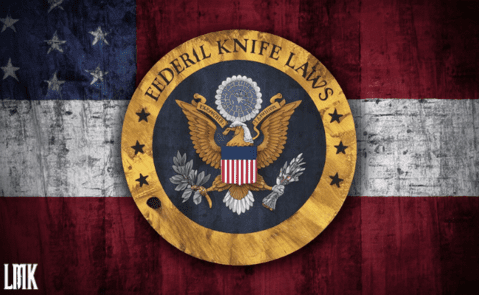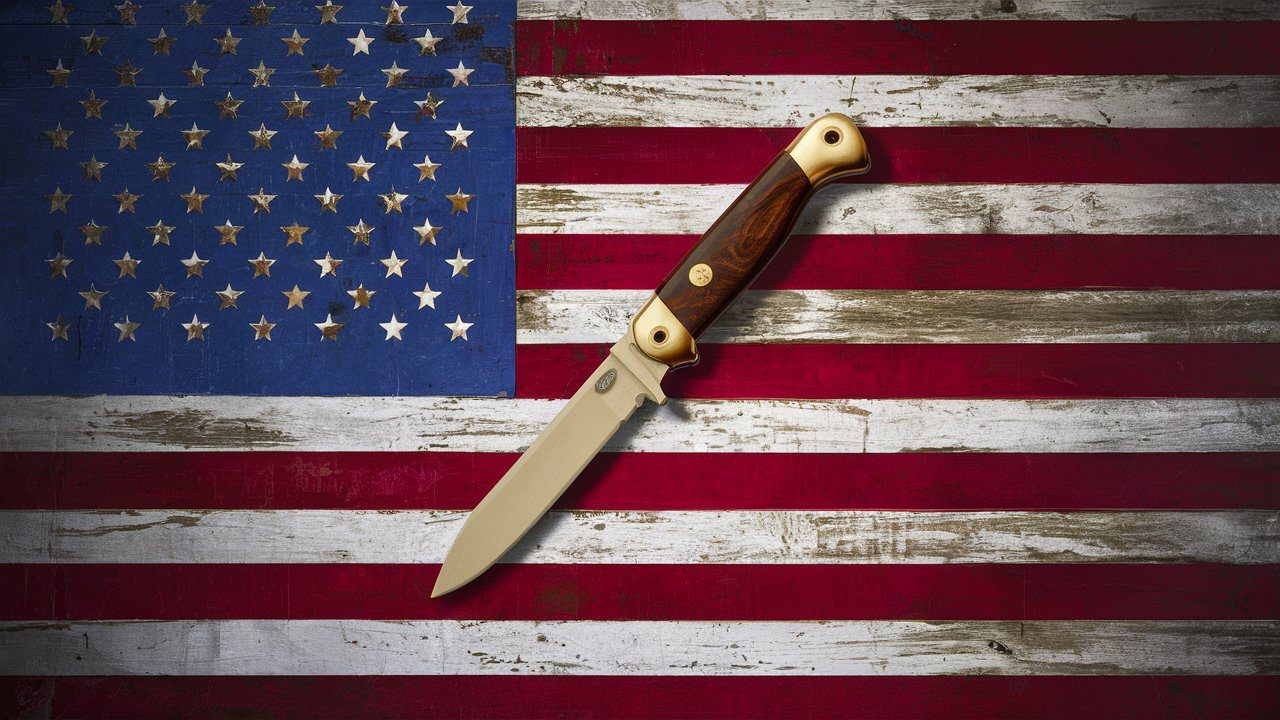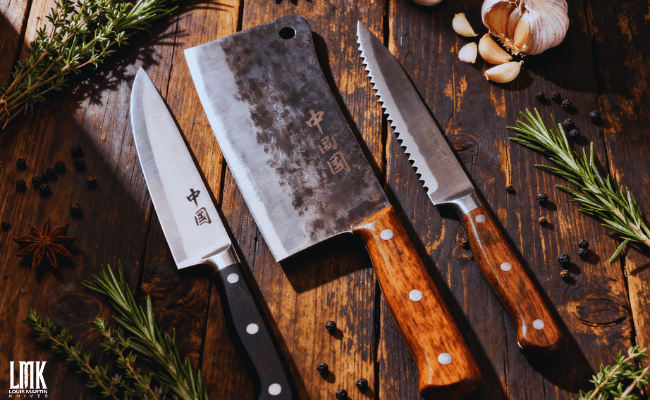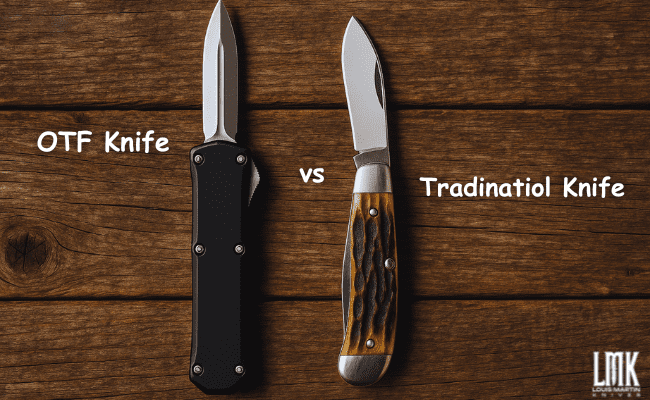Understanding knife laws in the United States is crucial for anyone who owns or carries a knife. Whether you’re a hunter, an outdoors enthusiast, or someone who simply likes to have a folding knife on hand, knowing the legal landscape is essential. America’s knife laws are incredibly varied and can be confusing, especially because they differ significantly from state to state. What might be legal in one state could be illegal just across the border. The purpose of this article is to provide a comprehensive guide to help you navigate the complex world of knife laws in America, giving you a state-by-state breakdown to ensure you stay within the law, wherever you are.
Understanding knife laws in America is crucial for every knife owner. Whether you’re a collector or a custom knifemaker, this state-by-state breakdown will help you navigate the complex legal landscape across the U.S.
Federal Knife Laws Overview
It’s crucial to comprehend the general federal restrictions that control knife use and ownership in the US before delving into specific state legislation. Federal laws mostly target particular kinds of knives, primarily ballistic and switchblades. For instance, the Switchblade Knife Act of 1958 forbids the production, distribution, and ownership of switchblades across state lines, with some exclusions for members of the armed forces and law enforcement. Top knives that are shipped across state lines or carried onto federal property, such as national parks or military facilities, are likewise subject to federal law.
However, there are sometimes overlaps between federal and state requirements, creating a complicated regulatory environment. For instance, even though the federal government may control the sale of specific best knives, states may impose further restrictions, such as the need for concealed carry permits or prohibitions on carrying particular knives.
Key Terms and Definitions
To better understand knife laws, it’s helpful to be familiar with some common terms and definitions.
Switchblade: A knife with a blade that springs out from the handle at the press of a button.
Dirk/Dagger: A knife with a pointed and typically double-edged blade, designed primarily for thrusting.
Concealed Carry: carrying a knife in a manner that conceals it from public view, often requiring a specific permit.
Other sorts of knives that are commonly referenced in legal situations include hunting knives, which are usually larger and intended for outdoor use, and folding knives, which have blades that fold into the grip and are generally deemed more lawful. You can better grasp your rights and obligations and navigate the legalese by being aware of these distinctions.
Regional Overview
Knife laws in America can be broadly categorized by region, with noticeable trends that reflect local cultures and attitudes toward knives.
Northeast: States in this region, like New York and Massachusetts, tend to have stricter knife laws. There are often severe restrictions on carrying knives in public, especially in urban areas.
South: In contrast, southern states like Texas and Alabama generally have more lenient knife laws, allowing for a wider range of knives to be carried, both openly and concealed.
West Coast: States like California have strict regulations, particularly on switchblades and other automatic knives, while still allowing for other types of knives with certain restrictions.
Midwest: Midwestern states often have a mix of lenient and strict laws, with rural areas typically being more permissive than urban centers.
These regional tendencies can serve as a general guide, but it’s crucial to check the specific laws in each state.
State-by-State Breakdown
Now, let’s take a closer look at the knife laws in different states, highlighting key restrictions and unique regulations.
a. Alabama to Arkansas
Alabama: Relatively lenient, it allows most knives, including hunting knives, but switchblades are prohibited.
Arkansas: Knife-friendly, allows the open carry of most knives, including folding knives and fixed blades.
b. California to Georgia
California: Strict on switchblades (blades over 2 inches are illegal), but folding knives are generally permissible.
Georgia: Lenient, with most knives allowed. Concealed carry requires a permit for knives over 12 inches.
c. Hawaii to Maryland
Hawaii: Strict, with laws prohibiting switchblades and butterfly knives. Concealed carry of dirks and daggers is illegal.
Maryland: Mixed regulations; Baltimore has stricter local laws. Folding knives are generally allowed, but carrying a concealed fixed blade is prohibited.
d. Massachusetts to New Jersey
Massachusetts: Strictly, prohibits carrying knives with blades longer than 1.5 inches in public without a valid reason.
New Jersey: Strict, with bans on carrying gravity knives, switchblades, and daggers without a lawful purpose.
e. New Mexico to South Dakota
New Mexico: Lenient, allows the open carry of most knives. Concealed carry of large knives requires a permit.
South Dakota: Knife-friendly, allowing most knives, including hunting knives, with few restrictions.
f. Tennessee to Wyoming
Tennessee: Very lenient, recently lifted switchblade restrictions and allowed most knives.
Wyoming: Permissive, allows the open and concealed carry of most knives, including large hunting knives.
Exceptions and Special Considerations
While the state-by-state breakdown provides a general overview, it’s important to note that there are exceptions and special considerations. Some states have unique or particularly strict knife laws that go beyond the norm. For example, New York City has very restrictive knife laws, even more so than the rest of New York State. Additionally, local ordinances may impose further restrictions, especially in schools, government buildings, and other sensitive areas. Minors often face stricter regulations, with many states prohibiting the sale or possession of certain knives to individuals under 18.
How to Stay Informed and Compliant
Given the complexity of knife laws in America, staying informed is key to avoiding legal trouble. Here are some tips:
Regularly Check State Websites: State government websites often provide up-to-date information on knife laws.
Use Legal Databases: Online legal databases can offer detailed insights into both state and local laws.
Consult Legal Professionals: If you’re unsure about the legality of a particular knife, consulting with a lawyer is always a good idea, especially if you’re traveling across state lines with your knives.
Conclusion
Understanding knife laws in America is essential for responsible knife ownership. With laws varying so widely from state to state, it’s important to stay informed and compliant to avoid unintentional legal issues. By following the guidelines provided in this state-by-state breakdown, you can ensure that you’re carrying your folding knife, hunting knife, or any other type of blade under the law. Remember, knife laws are constantly evolving, so staying updated on the latest regulations is key to being a responsible knife owner in America.
